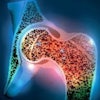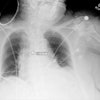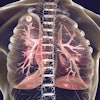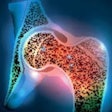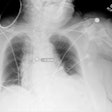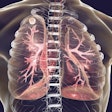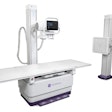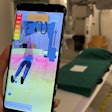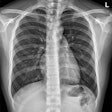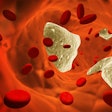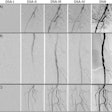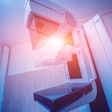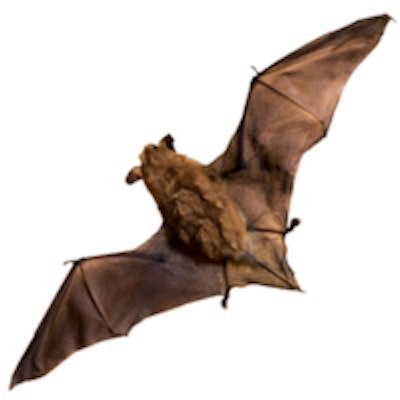
Several years ago, authors in BMJ proposed that eponyms be abandoned.1 Personally, I've always approved of eponyms. According to whonamedit.com, an eponym is a word derived from the name of a person, whether real or fictional, and a medical eponym is any word related to medicine whose name is derived from a person.
As organically derived terms, they are fundamentally nonscientific, and we shouldn't pretend otherwise. Jargon they may be, but useful jargon nevertheless. Without them, medicine would be culturally impoverished. Also, the lack of obscure triple-barreled Germanic syndromes would make teasing successive generations of juniors more difficult.
Radiology has few eponyms that have stood the test of time. Sir Peter Kerley's B lines are justly famous. However, when a young radiologist confidently pronounces the presence of A and C lines, it is usually one of the first signs of his schizophrenia. The name of the mighty Leo G. Rigler is mainly associated with his classic description of a double bowel wall sign of a pneumoperitoneum rather his description of an enlarged left ventricle on a lateral chest film. The first U.S. professor of radiology, Henry Pancoast, has an eponym that is still thriving. Plus he is possibly the only radiologist ever with the middle name "Khunrath." Seriously.
 Dr. Paul McCoubrie is a consultant radiologist at Southmead Hospital in Bristol, U.K.
Dr. Paul McCoubrie is a consultant radiologist at Southmead Hospital in Bristol, U.K.
Rather than eponyms, radiology has many "classic signs." These typically arise when a radiologist, wild-eyed from spending eight hours at a PACS workstation, says something like, "Wow, these hepatorhubarbomas all look like mushrooms!"A short email to a learned journal later and, hey presto, the "mushroom sign" is born.
From a historical perspective, such radiological visual comparisons are only a century or so behind our pathological colleagues. Sorry, I should rephrase that -- our colleagues in the pathology department. I can imagine a bewhiskered 19th century pathologist holding up a spleen saying, "Forsooth, methinks it is like sago!" before dispatching a telegram to Lancet.
This proliferation of radiological semiology seems to have no end. Our transatlantic cousins should shoulder most of the blame as their journals publish not only regular slots for new signs but also endless reviews lauding previously described signs.
In fairness, such visual similes can be enlightening and easy to remember, and they can also aid explanation or teaching. For some reason, the food signs I find quite memorable.2 This is in distinction to eponyms (and mnemonics too), where I can remember the name of the eponym/mnemonic but precious little else about it.
The main thrust of this article is that I think that radiology has some truly awful signs. Moreover, they can be tenuous, obscure, and, at worse, misleading. Furthermore, I would argue, overtly focusing on "classic signs" is misguided. Reducing our beautiful, complex, subtle specialty to a banal dictionary of visual "Aunt Minnies" fails to reflect real-life radiology. I feel it is a destructive, anti-intellectual force -- a very real "dumbing down" of radiology.
I realize that, for many, I am about to commit heresy. But if you want a shining example of a tenuous sign, take the so-called "bat's wing appearance" of perihilar opacity in pulmonary edema. It is traditionally taught and much beloved of medical students -- in fact, it seems the only thing they can remember in their final examinations. But it is a rubbish sign, in my humble opinion. Now I am no expert on the flying mammals of the order Chiroptera, but it couldn't look less like bat's wings if it tried. Plus, either I keep walking past it as a sign (entirely possible) or it is a pretty rare appearance to capture radiographically. Besides, perihilar edema looks much more butterfly-like to me, but I guess systemic lupus erythematosus (SLE) got there first with that one.
Some signs are exercises in obfuscation. In this category of duff signs, the origin of the visual simile only makes sense to those with a doctorate in the Classics. Take, for example, the Phrygian cap, where a gallbladder fundus flops over on itself. Pretty meaningless anatomical variant, really. Not even worth a separate name. But who would be able to confidently identify a Phrygian cap? Or an Erlenmeyer flask, come to that?
I won't launch into a diatribe concerning pedantic inaccuracies in certain radiological descriptions just now. Suffice it to say that stags have antlers, not horns. Complex renal stone disease will do me just fine.
Signs naturally range in their specificity and sensitivity. At one end of the spectrum, there are rare signs that are 100% sensitive and specific; the truly pathognomic sign that is much treasured in teaching collections. At the other end of the spectrum is a ragbag of signs with singularly dubious evidence behind them. Of course, once someone says there is a link, it is hard to disprove it conclusively. Particularly when the link is between something rare and something common. I can't think how much research time has been wasted in disproving iffy signs. Take, for example, the elevated pronator fat pad sign of occult distal radial fracture. Decades after it was first described as a useful, someone finally does a decent study and it is found to be pretty much useless.3
To circumvent the inherent problems in using either an eponym or a sign without resorting to dry, technical language, I propose a new "third way." This is to encourage the conjoined eponymous sign. By this method, the surname of the originator must be conjugated to the visual simile. So, the relatively anonymous "mushroom sign" becomes "McCoubrie's mushroom sign (of hepatorhubarbosis).. This way, credit can go where credit is due. Plus we know who to give a good kicking when they get it wrong. You never know, it might even encourage our legally minded radiological cousins across the pond to stop inventing ever more tenuous signs.
Dr. Paul McCoubrie is a consultant radiologist at Southmead Hospital in Bristol, U.K.
References
- Woywodt A, Matteson E. Should eponyms be abandoned? Yes. BMJ. 2007;335(7617):424.
- Bon appétit! Food signs in radiology. AuntMinnieEurope.com. July 16, 2012. www.auntminnieeurope.com/index.aspx?sec=sup&sub=cto&pag=dis&ItemID=606884.
- Annamalai G, Raby N. Scaphoid and pronator fat stripes are unreliable soft tissue signs in the detection of radiographically occult fractures. Clinical Radiology. 2003;58(10):798.
The comments and observations expressed herein do not necessarily reflect the opinions of AuntMinnieEurope.com, nor should they be construed as an endorsement or admonishment of any particular vendor, analyst, industry consultant, or consulting group.
